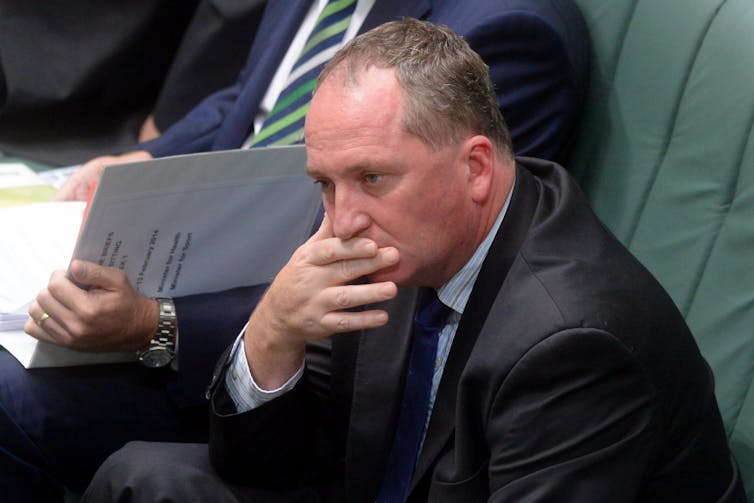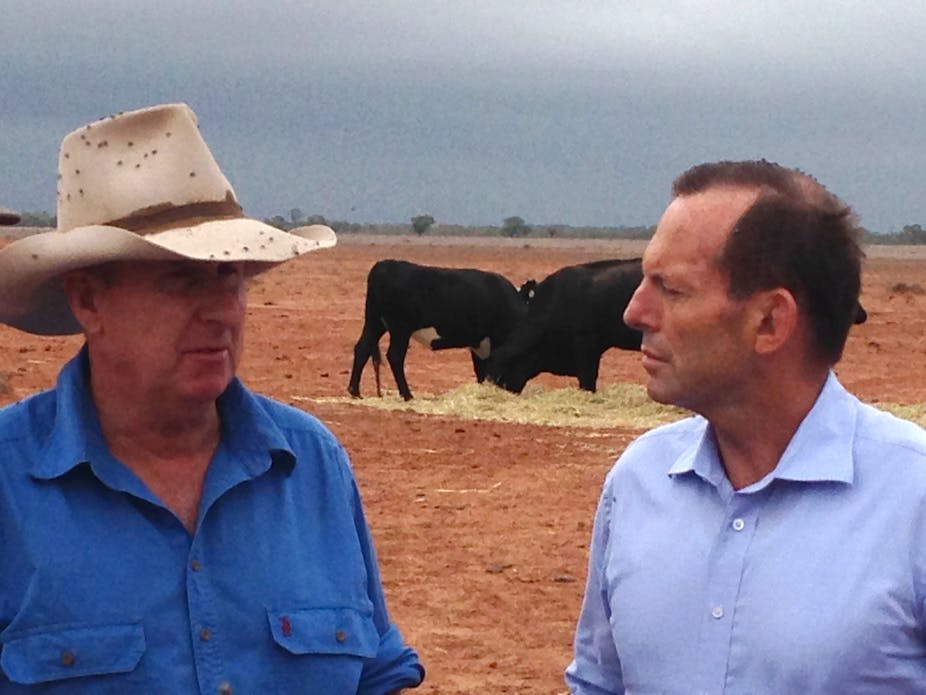Australia’s National Drought Policy, introduced in 1992 and recognised internationally as world’s best practice, now appears to be dead.
In its place we are seeing back-to-the-future policymaking. This will result in farmers in different states receiving different types and levels of support, farmers without debt or unwilling to take on more debt left unsupported, and policy being made at the worst possible time – in the middle of a worsening drought.
A land of drought and flooding rains
Over a century ago, poet Dorothea Mackellar recognised what it took policymakers until 1989 to acknowledge: drought is a normal part of Australia’s climate. Although we have very successfully developed European-style agriculture in this wide brown land, we have never had the certain weather patterns of Europe. Our farmers have adapted and managed their businesses knowing that the next drought is inevitable, even if its timing is unknown.
Until 1989, drought relief was provided to farmers through the natural disaster relief arrangements, under which the federal and state governments divide up financial responsibility for responding to natural disasters such as floods, bushfires and cyclones. In 1989, drought was removed from the list of events covered by these arrangements.
Drought is different from these other, more sudden, events – it is creeping and cumulative and does not have an easily identified beginning or end.
The National Drought Policy
In 1992, the federal and state governments agreed to a National Drought Policy. It was based on the principle that drought was one of many risks facing farm businesses, along with commodity price risk, exchange rate risk and interest rate risk. A package of support was put together that emphasised self-reliance and drought preparedness.
The package included “exceptional circumstances” measures that provided additional relief during droughts of such severity that even the best manager could not be expected to be prepared. The package was designed to provide some certainty about what support would be available in the event of drought and to avoid policy making on the run.
The policy was not perfect and over the years under went a series of revisions. For example, a welfare component was introduced in 1994 to augment the business support on offer. It is notable that throughout the 1990s and the first decade of this century, the rhetoric of self-reliance and risk management remained and the policy enjoyed bipartisan support.
In 2008, the then-Labor government initiated a comprehensive review of the National Drought Policy. The review had several elements. The Bureau of Meteorology and the CSIRO assessed the likely impact of climate change on the severity and frequency of future droughts; an expert panel reported on the social impact of drought; and a Productivity Commission report analysed the effectiveness and efficiency of existing drought measures.
This review process held the promise of a refined, more effective National Drought Policy.
Creating a policy vacuum
Instead of improving an already sound policy, the aftermath of the review was the dismantling of some programs on the recommendation of the Productivity Commission; the announcement of a farm finance package that harked back to the 1930s; and the promise of a farm welfare program to begin in July 2014.
This response, announced by the Labor government, took four years to emerge. It was accompanied by an Intergovernmental Agreement on drought with the state governments that was little more than a restatement of the principles underpinning the original 1992 package – but without the detail.
The incoming Abbott government inherited this policy vacuum. Now, faced with worsening drought on the eastern seaboard, the government is scrambling to put together a package to meet the immediate needs of drought-stricken farmers and their families.
Also signalling the demise of the National Drought Policy is the return to the language of natural disaster. In recent weeks, both prime minister Tony Abbott and treasurer Joe Hockey have referred to the drought in such terms.

Making better ready-to-go policy
In the absence of a considered drought policy package, governments run the risk of ad hoc policymaking. That is not in the best interest of farmers, their communities or the sector as a whole. The National Drought Policy sought to avoid this by putting a stable package of measures in place that would be ready to access when drought inevitably arrived.
At present, farmers are stressed and politicians are under pressure to respond. This is not a good environment for sound policymaking. Unfortunately there is little choice: the drought is worsening and policymakers need to act.
Whatever is put in place, however, should be temporary, while policymakers go back to the drawing board and rethink drought policy settings in a more measured way. A good starting point would be to revisit the 1990 Drought Policy Review Task Force Report that informed the development of the National Drought Policy in the first place.
Perhaps it would be worthwhile for policymakers to reacquaint themselves with other previous relief schemes, the reviews of those schemes and the reasons they were dismantled. It would also be useful for them to approach the task with an open mind. They should consider alternative policy instruments, such as income-contingent loans, to support farm businesses in need.
Recent drought policy developments suggest a serious loss of corporate memory. The original National Drought Policy was not perfect but it was preferable to the policy vacuum facing the nation now. It would pay today’s policymakers to consider the 1992 policy and build on it rather than abandon it altogether.

